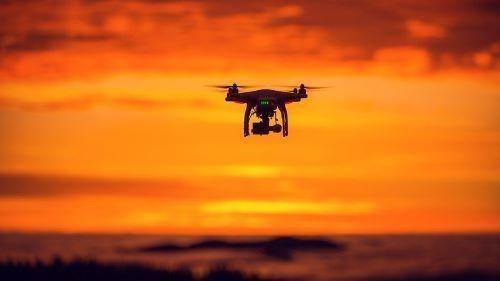Flying Drones in Spain - The Rules
The Laws regarding the flying of drones are very strict in Spain. These flying devices, however small they may be, are subject to the regulations of the Spanish Aviation Safety Agency (AESA) and these rules must be followed, unless you want to risk an eye watering fine, Fines for the misuse of drones for recreational purposes can reach 225,000 euros.
Who are the AESA? This is the Spanish Agency for Aviation Safety, they are in charge of everything related to Air Navigation and Transport, as well as Airport Security.
Find out here, what spaces a drone (remotely piloted aircraft) can fly over.
Some rules do not apply if your drone weights less than 250 grams, and does not exceed 20 metres in height, these are regarded as a toy.
*Please note - If your drone weights less than 250 grams but can operate at speeds greater than 90km/h and is equipped with a camera or a microphone, it is NOT classed by the UAS as a toy.*
Do you need a licence to fly a drone in Spain?
For drones from 250 grams, it is mandatory to obtain a certificate that accredits a minimum of knowledge, and that will allow the flight of drones in the different established categories, which may be Level 1 or 2, depending on the risk of the operation, to fly in some specific categories, it is necessary to pass the AESA Level 3 exam.
There is no longer a distinction between professional and recreational flying.
To submit an application, please follow this link*
Remote Pilot Certificate (Non-EU Residents)
If you want to fly your drone in Spain and live in a non-EU country, you must hold a Remote Pilot Certificate from an EU country.
You can get the A1/A3 Certificate by registering with the online Remote Pilot School.
Rules that you need to follow, even if your drone is less than 250 grams.
You must respect the rule of not flying within a radius of 8 km from any airport, aerodrome or other controlled air spaces.
You cannot fly in National Parks, wildlife conservation areas, Biosphere Reserves, and other protected natural areas.
If your drone carries a camera, you must be careful not to violate the Data Protection Act and the Right to Honour and Privacy.
Drones should not be piloted where other low-altitude flights are carried out such as skydiving, ballooning or paragliding.
Drone users must pilot drones in suitable weather conditions, that is, without rain, fog or wind.
Other rules for Drones over 250 grams
Recreational flights: Flight prohibited in urban areas
According to the State Aviation Safety Agency (AESA), the flight of drones in urban areas or over crowds of people such as parks, public or private gardens, streets, beaches, concerts or demonstrations is prohibited.
Suitable area: The flight area must meet certain conditions
The regulation approved on December 15th, 2017 establishes that drones can only be used in areas suitable for it, which are generally unpopulated areas or model aircraft flight zones.
Day time flights
The device must always fly during the day, less than 120 meters high and with the drone in view of the controller at all times.
Night flights

According to the State Aviation Safety Agency, there is the possibility of carrying out night flights, as long as the drone weighs less than two kilos and does not exceed fifty meters in height.
Liability insurance is not mandatory, but it is highly recommended to have one, as the pilot is responsible for any damage caused by the aircraft.
Drone Identification
The drone must have a fireproof identification plate fixed on the structure that will contain data such as the manufacturer’s name, model, serial number (if applicable) and the pilot’s contact details.
*Disclaimer - The information provided above is based on current AESA rules, and are a guide as these can be change at any time.*
Find other topics covered in the General Information Section



